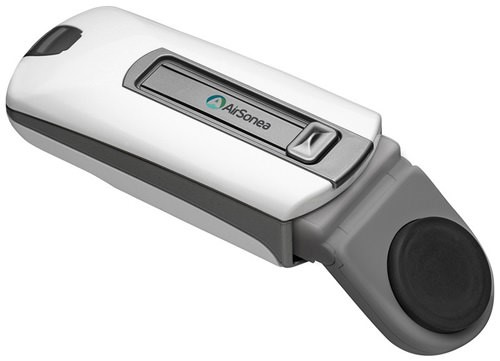Asthma is a chronic illness which can flare up at any time. And in America alone, more than 24 million people suffer from asthma, making it an extremely common malady. Thankfully, with modern science and technology we are now far better equipped to deal with asthma, using cutting edge technology to keep the wheezing at bay and your air passages open.
Today’s asthma-fighting toolbox has high-tech gadgetry that combine electrical technology with medical care to both track asthma and aid in its prevention and alleviation. Here are five great gadgets that can really help in the fight against this chronic illness. Whether you’re a new sufferer or have been battling with asthma since childhood, these gadgets can help avoiding that overwhelming feeling of stress and panic that can trigger attacks.
GeckoCap

Inhalers like Ventolin are used to relieve asthma symptoms. Most people who have had asthma are familiar with these tiny pocket-sized inhalers that give you a dose of salbutamol or some other medicine to lower the inflammation in your airways, but the main challenge with asthma sufferers is that they forget to take their medicine unless they are experiencing an attack and need immediate relief.
Inhaler trackers seek to solve that problem with a few innovations. The GeckoCap is a small rubber item that goes on top of the canister which contains the salbutamol. It has LED lights which light up when it’s time to take the recommended dose, which reminds people, kids in particular, to take their medicine. It won’t stop blinking until the dose is taken so it’s hard to ignore.
When the inhaler is pressed, the device transmits this data through Bluetooth to a computer or smartphone, which tracks the usage of the inhaler. This is helpful for parents or doctors who need to monitor whether the patient is taking their medicine.
MySpiroo

The MySpiroo is a peak flow meter, a device used to measure maximum rate of air flow out of your lungs during exhalation. Asthma attacks tend to have a downward trend in flow, so these devices can really give a clear picture of how bad your asthma is, or how much you have recovered.
This portable spirometer also connects to your smartphone through a headphone jack and records your flow data automatically, saving the tedium of needing to write it down, and has a geolocation function to help release warnings for pollen-heavy areas and possible pollutants that can trigger attacks.
AirSonea

The AirSonea takes a different approach to monitor your asthma levels. Instead of the peak flow meter approach of directly measuring your breath, the AirSonea is a wheeze detector that records airway sounds and presents the recorded sounds as visual data for a parent or doctor to interpret. Data is captured by putting the device to your windpipe for half a minute.
The resulting measurement is known as the WheezeRATE, and is sent to a Bluetooth-paired phone where the device’s algorithms can determine if wheezing is occurring based on the patterns in the sound graph.
It’s easier to use than traditional peak flow meters, and is a first of its kind, so it’s an exciting asthma gadget to watch.
ADAMM

This is the only wearable in this lineup, and it resembles a spinner toy to relieve stress. It doesn’t actually spin, however. It’s actually a patch-like device that attaches directly to your skin and is designed to be worn anywhere on the upper body, where its various sensors work their magic.
Its power is real-time respiratory monitoring: most asthma attacks are actually advanced stages of symptoms which people only notice they are having when the attack gets too severe to ignore. In truth, the attacks start much earlier with symptoms that are not immediately noticeable. The ADAMM monitors your body and sets it baseline after an acclimation period, and afterwards can determine in real time if you are having the beginnings of an asthma attack.
This added self-awareness serves as an early warning system so you can take the steps to relieve the symptoms before they escalate and become painful or life-threatening.
Wing Digital Lung Function Monitor

Wing is a pocket-sized sensor that plugs in directly to your phone. It’s an FEV1 meter, meaning its sensors track the forced expiratory volume in the first second of your breath. It doesn’t need batteries and draws power form your phone, making it very simple to operate. It serves as a sensor for your phone, which can then visualize your lung function, find environmental and medication triggers which can affect your breathing, and give you a heads up when you are about to trigger an asthma attack.
Modern asthma treatments have truly moved into the 21st century with these very impressive high-tech gadgets. This is but the tip of the iceberg when it comes to what technology can do for asthma sufferers, and it’s only going to get better as we move into an interconnected Internet of Things world. If you are grappling with asthma and feel like you need some special assistance from science take a look at some of these gadgets and be sure to keep the air around you clean.








